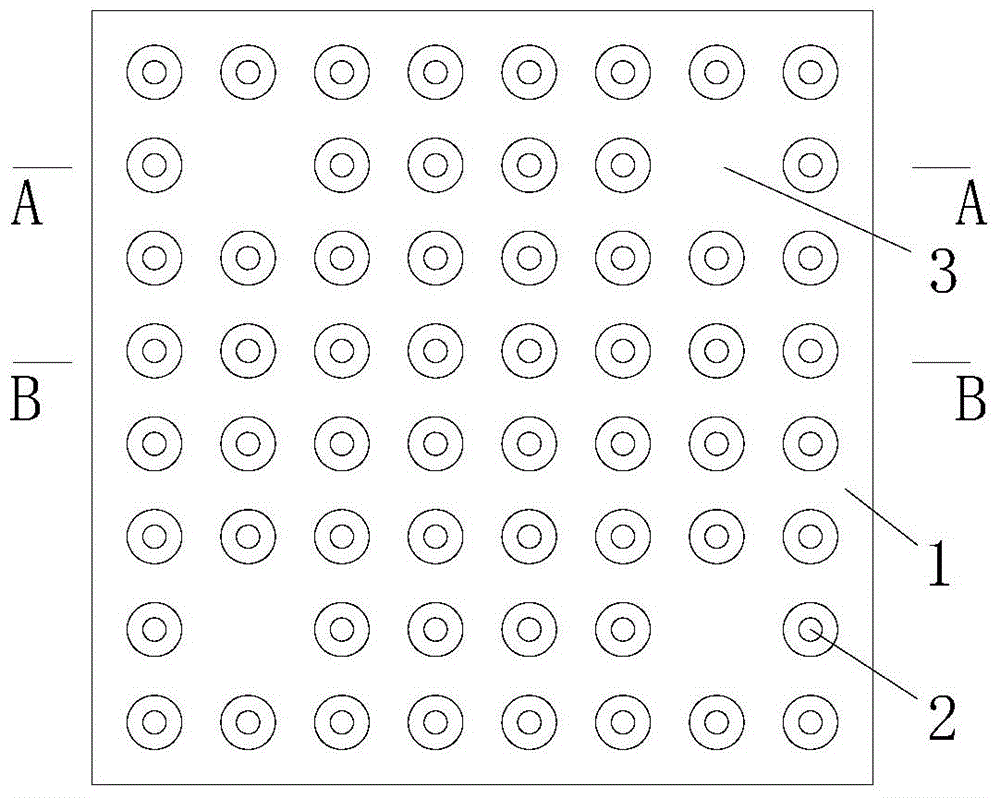Heat storage body and heat storage structure of heat storage body, forming die and manufacturing method
A technology for forming molds and heat storage bodies, which is applied to heat storage equipment, heat exchanger types, indirect heat exchangers, etc., can solve the problems of easy blockage, large fluid flow resistance, low heat exchange rate, etc. The effect of increasing the flow resistance and increasing the heat transfer rate
- Summary
- Abstract
- Description
- Claims
- Application Information
AI Technical Summary
Problems solved by technology
Method used
Image
Examples
Embodiment 1
[0040] A heat storage body includes a heat storage body 1, on which a plurality of converging fluid channels 2 are opened, and the wall profile of the converging fluid channel 2 is at least two arcs and one of arcs. The bus bar formed by the tangent lines between the two turns around the central axis to form a shape or a diameter-reducing channel whose diameter changes smoothly. Like a bottleneck.
[0041] The specific structure of the diameter-reducing channel is a circular diameter-reducing channel whose diameter changes from small and smooth to larger and then from large diameter to smoothly smaller. Preferably, the bus bar is a smoothly changing streamline. Preferably, the diameter of the two ports of the converging fluid channel 2 is larger and the other is smaller, and the diameter of the converging fluid channel 2 between the large and small ports transitions smoothly from large to small. Specifically, the radius of the arc is 2-50mm, the diameter of the large port of the...
Embodiment 2
[0046] A heat storage structure in which two or more heat storage bodies are superimposed on each other as described in the first embodiment, and the two superposed heat storage bodies are connected with the convergent fluid channel 2 to form a smooth long convergent fluid aisle. Preferably, the same diameter ports of the two overlapping heat storage body converging fluid channels 2 are connected correspondingly.
[0047] The working process and working principle of the present invention: the heat storage bodies are stacked in a certain order to form a continuous streamlined or wavy long convergent fluid channel. The gas flows in the long convergent fluid channel with alternating flow velocity. Change, forming a certain turbulent vortex, the particles in the gas are not easy to deposit and block the channel, which can significantly increase the gas-solid surface heat transfer rate between the gas and the heat storage body, and because the wall of the long and narrow fluid channel...
Embodiment 3
[0050] A heat storage body forming mold for manufacturing the heat storage body described in the first embodiment, comprising an upper mold plate 4, an upper mold base 5, a convex mold 6, a lower mold base 7 and a demolding mechanism, and the lower mold base 7 The upper mold has a cavity, the upper template 4 is fixed with the upper mold base 5, the punch 6 is nested on the upper mold base 5, the molding part of the punch extends from the upper mold base 5, and the demolding mechanism is connected to the lower mold base 7. on.
[0051] Due to the large number of zoom-type fluid channels 2, it is difficult to process more punches 6 with small spacing on a steel block. Therefore, the present invention first processes the punch 6, the upper template 4 and the upper mold seat 5 separately. Then, insert the punch 6 in the upper mold base 5, and finally press the punch 6 with the upper mold 4, and fasten the upper mold 4 and the upper mold base 5 into one body with bolts, which effecti...
PUM
 Login to View More
Login to View More Abstract
Description
Claims
Application Information
 Login to View More
Login to View More - R&D
- Intellectual Property
- Life Sciences
- Materials
- Tech Scout
- Unparalleled Data Quality
- Higher Quality Content
- 60% Fewer Hallucinations
Browse by: Latest US Patents, China's latest patents, Technical Efficacy Thesaurus, Application Domain, Technology Topic, Popular Technical Reports.
© 2025 PatSnap. All rights reserved.Legal|Privacy policy|Modern Slavery Act Transparency Statement|Sitemap|About US| Contact US: help@patsnap.com



